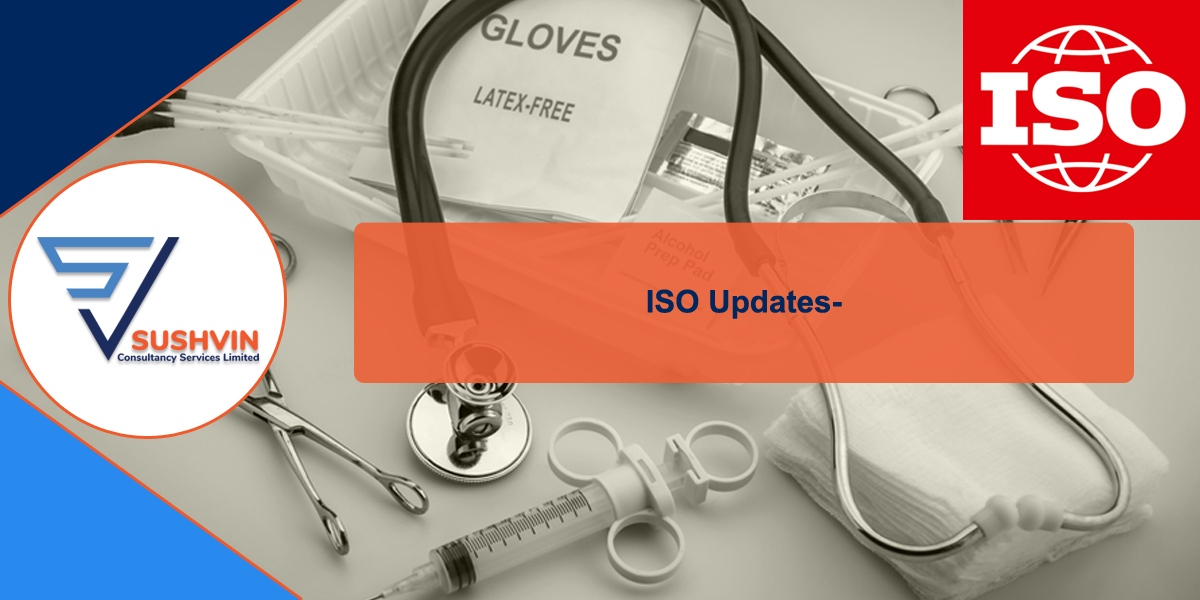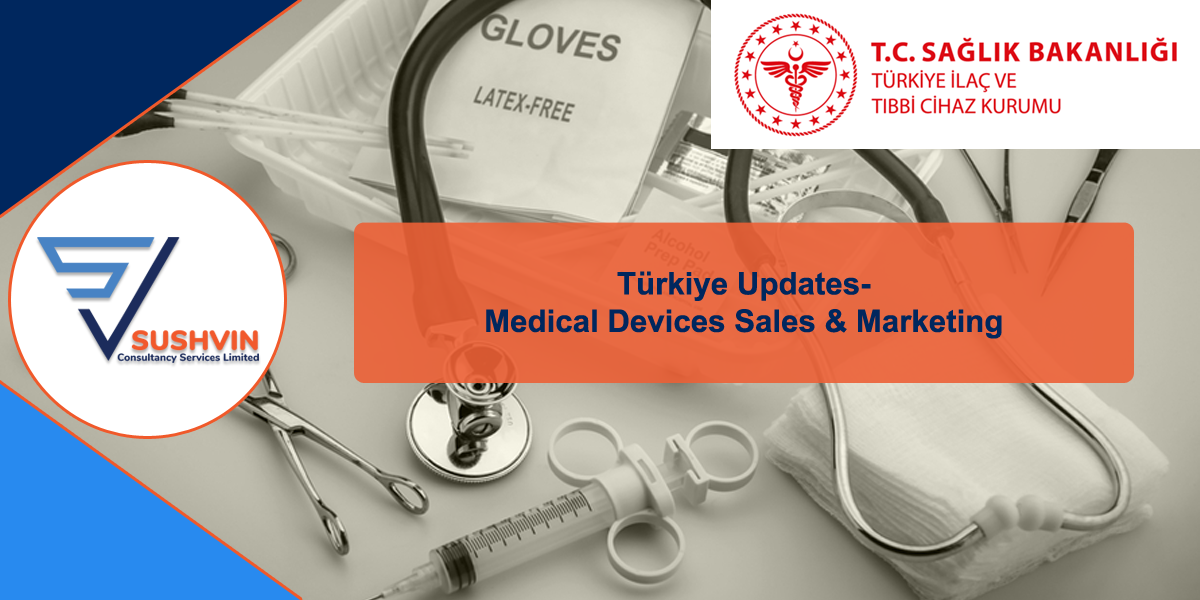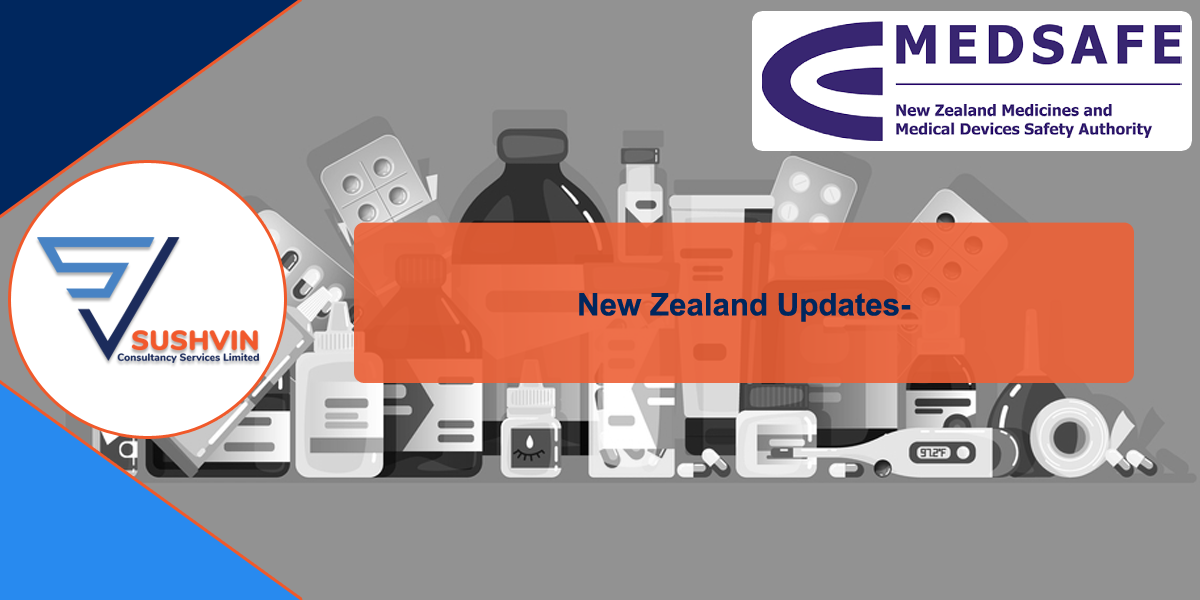ISO Updates

ISO 10993-23:2021/DAmd1 Update : Biological evaluation of medical devices — Part 23: Tests for irritation
Amendment 1: Additional in vitro reconstructed human epidermis models
Under Development
This Draft International Standard is in the enquiry phase with ISO members. This amendment applies to ISO 10993-23:2021
Amendment 1 to ISO 10993-23:2021 was prepared by Technical Committee ISO/TC 194, This amendment to ISO 10993-23:2021 refines the following:— Addition of two reconstructed human epidermis (RhE) models to the list of models accepted to conduct in vitro alternative test per the methods in 6.2 to 6.12;— Clause 6 updated to introduce specificities of the two RhE models added.
UK Updates

Press release Published, 22 October 2024
Statutory Instrument laid in Parliament sets out first steps in delivering Medical Device Regulatory Reform and strengthening patient safety
The new legislation will introduce clearer and risk-proportionate requirements that improve the safety of medical devices across Great Britain and provide certainty for manufacturers ahead of introducing the wider future regulatory regime.
The Medical Devices (Post-market Surveillance Requirements) (Amendment) (Great Britain) Regulations 2024
(Draft Legislation: This is a draft item of legislation and has not yet been made as a UK Statutory Instrument.)
The Regulations 2024 introduces significant updates to the post-market surveillance (PMS) requirements for medical devices in Great Britain:
Enhanced PMS Requirements: The amendment strengthens the obligations for medical device manufacturers to conduct post-market surveillance. This includes more rigorous monitoring and reporting of device performance and safety once they are on the market.
Regulatory Alignment: The new regulations aim to align Great Britain’s PMS requirements more closely with international standards, ensuring that devices meet high safety and performance criteria. This alignment helps maintain the UK’s competitiveness in the global medical device market.
Impact on Manufacturers: Manufacturers are expected to incur additional costs due to the enhanced PMS requirements. These include one-off setup costs and ongoing maintenance expenses. Despite these costs, the regulations are designed to improve patient safety and reduce the incidence of device-related adverse events.
Implementation and Compliance: The regulations outline clear timelines and procedures for implementation. Manufacturers must update their PMS systems and processes to comply with the new requirements. The amendment also includes provisions for the enforcement of these requirements by regulatory authorities.
Support for SMEs: Recognizing the potential burden on small and medium-sized enterprises (SMEs), the regulations include measures to support these businesses in meeting the new PMS requirements. This support is crucial for ensuring that SMEs can continue to innovate and compete in the medical device market.
Standard Implementation of the future regulations, Updated 22 October 2024
The document on the implementation of future regulations for medical devices outlines significant changes aimed at enhancing patient safety and ensuring the UK remains a competitive market for medical technology.
Key points:
Transitional Arrangements
The government has extended the acceptance of CE marked medical devices on the Great Britain market to ease the transition to the new regulatory framework. This includes specific timelines for different types of medical devices, ensuring a smooth transition and continuous supply.
Post-Market Surveillance (PMS) Requirements
A major focus of the new regulations is the introduction of strengthened PMS requirements. These are designed to improve patient safety by ensuring that medical devices on the market are continuously monitored and any issues are promptly addressed. The draft PMS statutory instrument was laid in Parliament on 21 October 2024, with the new requirements expected to be implemented in 2024.
Implementation Timeline
The roadmap for the new regulatory framework includes a phased approach to implementation, with priority measures for PMS being introduced first. Core elements of the new framework are expected to be in place by 2025.
EU Updates

The European Parliament has recently voted in favor of a proposal urging the European Commission to develop a systematic plan for revising the EU Medical Devices Regulation (MDR) within 180 days, aiming for completion by the end of Q1 2025.
JOINT MOTION FOR A RESOLUTION on the urgent need to revise the Medical Devices Regulation | RC-B10-0123/2024/REV1 | European ParliamentThis decision reflects the urgent need to address challenges and ensure the continuous availability of medical devices across the EU:
Urgency and Timeline: The proposal highlights the critical need for timely revisions to avoid potential shortages of medical devices. The European Commission is expected to present a comprehensive plan by the end of the first quarter of 2025.
Stakeholder Concerns: The resolution acknowledges the difficulties faced by manufacturers, particularly small and medium-sized enterprises (SMEs), in complying with the current MDR framework. These challenges have led to delays and potential risks to patient access to essential medical devices.
Improved Regulatory Framework: The proposed revisions aim to streamline regulatory procedures, enhance the capacity of notified bodies, and ensure a more predictable and transparent certification process. This is intended to foster innovation while maintaining high safety standards.
Focus on Patient Safety: Ensuring patient safety remains a top priority. The revisions will likely include strengthened post-market surveillance and vigilance reporting requirements to monitor the safety and performance of medical devices continuously
Reflection Paper on the Use of Artificial Intelligence (AI) in the Medicinal Product Lifecycle published by the European Medicines Agency (EMA). SEPTEMBER 2024
The document provides an insightful exploration into the role of AI technologies in the development, manufacturing, and monitoring of medicinal products.
The paper outlines key considerations for regulators, industry stakeholders, and researchers regarding the integration of AI into the pharmaceutical and biotech sectors, particularly from a safety, efficacy, and compliance perspective.
Key points:
Scope and Purpose: The paper discusses the potential applications of AI in various stages of the medicinal product lifecycle, including drug discovery, development, manufacturing, and post-marketing surveillance.
Regulatory Considerations: It emphasizes the need for robust regulatory frameworks to ensure the safe and effective use of AI technologies. This includes considerations for data quality, transparency, and accountability.
Ethical and Social Implications: The document highlights the importance of addressing ethical issues, such as patient privacy, data security, and the potential for bias in AI algorithms.
Challenges and Opportunities: It outlines the challenges in integrating AI into the medicinal product lifecycle, such as the need for interdisciplinary collaboration and the development of new skills and expertise. At the same time, it points out the opportunities for improving efficiency and innovation in the pharmaceutical industry.
Future Directions: The paper suggests areas for future research and development, including the creation of guidelines and best practices for the use of AI in this field.
2024/2625 COMMISSION IMPLEMENTING DECISION (EU) 2024/2625 of 8 October 2024 amending Implementing Decision (EU) 2021/1195 as regards harmonised standards for aseptic processing of health care products and clinical performance studies using specimens from human subjects
The EU Commission Implementing Decision (EU) 2024/2625 amends the previous Implementing Decision (EU) 2021/1195, focusing on harmonised standards for aseptic processing of healthcare products and clinical performance studies using specimens from human subjects. Here are some key points from the document:
Harmonised Standards Update: The decision incorporates new harmonised standards, specifically EN ISO 13408-1:2024 for aseptic processing and EN ISO 20916:2024 for clinical performance studies. These updates reflect the latest technical and scientific advancements.
Regulatory Alignment: The updated standards are designed to support the requirements of Regulation (EU) 2017/746 on in vitro diagnostic medical devices. This ensures that devices conforming to these standards are presumed to meet the regulatory requirements.
Presumption of Conformity: Compliance with these harmonised standards confers a presumption of conformity with the essential requirements set out in the relevant EU legislation. This simplifies the regulatory process for manufacturers and enhances the safety and effectiveness of medical devices.
Implementation and Enforcement: The decision outlines the process for the publication and enforcement of these standards, ensuring that they are integrated into the regulatory framework promptly. This includes the immediate entry into force upon publication in the Official Journal of the European Union.
Public Interest and Transparency: The decision also addresses the public interest in the disclosure of harmonised standards, ensuring transparency and accessibility of these documents to stakeholders and the general public.
Overall, this implementing decision aims to enhance the regulatory framework for medical devices in the EU by incorporating up-to-date standards that ensure high levels of safety and performance.
New MDCG 2024-12 on ‘Corrective and preventive action plan assessment’ 18/10/2024
The MDCG 2024-12 document provides comprehensive guidance on the assessment of Corrective and Preventive Action (CAPA) plans, specifically tailored for conformity assessment bodies (CABs), notified bodies (NBs), designating authorities (DAs), and joint assessment teams (JATs).
Key points:
Purpose and Scope: The guidance aims to standardize the assessment process of CAPA plans under the Medical Devices Regulation (MDR) and In Vitro Diagnostic Medical Devices Regulation (IVDR). It includes templates to facilitate a consistent approach across different bodies.
CAPA Plan Structure: The document outlines the essential components of a CAPA plan, including the identification of non-conformities, root cause analysis, corrective actions, preventive actions, and verification of effectiveness.
Templates and Tools: Annex I and Annex II provide detailed templates for CAPA plans and their assessments. These templates are designed to ensure thorough documentation and facilitate the review process by DAs and JATs.
Timelines and Processes: The guidance specifies timelines for the submission and review of CAPA plans, ensuring timely and efficient handling of non-conformities. It also highlights the importance of clear communication between all parties involved.
Considerations for Different Bodies: The document provides specific considerations for CABs, NBs, DAs, and JATs, ensuring that each body understands its role and responsibilities in the CAPA process. This includes detailed instructions on how to document and address non-conformities.
Effectiveness Verification: Emphasis is placed on verifying the effectiveness of corrective and preventive actions to ensure that non-conformities are adequately addressed and do not recur.
The EU Commission Publishes Q&A on The Information Obligation in Case of Interruption or Discontinuation of Supply of Certain Medical Devices and In Vitro Diagnostic Medical Devices
The document provides practical guidance on the obligations to inform about the interruption or discontinuation of supply of certain medical devices and in vitro diagnostic medical devices:
Purpose and Scope: The document aims to clarify the requirements introduced by Regulation (EU) 2024/1860, which amends the MDR and IVDR. It focuses on the obligation to inform competent authorities about any anticipated interruptions or discontinuations in the supply of certain devices.
Applicability: The guidance specifies which devices are covered under Article 10a and outlines the responsibilities of manufacturers, importers, and distributors. It also details the circumstances under which these obligations apply.
Notification Requirements: Manufacturers must notify competent authorities in advance of any anticipated supply interruptions or discontinuations. The document provides a template for the “Manufacturer Information Form” to standardize these notifications.
Assessment of Impact: The guidance explains how manufacturers should assess the potential impact of supply interruptions on patient health and public health. It includes criteria for determining whether an interruption could result in serious harm.
Communication and Documentation: The document emphasizes the importance of clear communication and thorough documentation. It outlines the information that must be included in notifications and the process for submitting these to the relevant authorities.
Roles of Economic Operators: The responsibilities of other economic operators in the supply chain, such as importers and distributors, are also detailed. They must ensure that they relay information from manufacturers to the competent authorities as required.
MDCG 2022-5 rev.1 - Guidance on borderline between medical devices and medicinal products under Regulation (EU) 2017/745 on medical devices - October 2024
The MDCG 2022-5 rev.1 guidance document provides detailed insights into the borderline between medical devices and medicinal products under Regulation (EU) 2017/745 on medical devices. Here are some key points from the document
Purpose and Scope: The guidance aims to clarify the demarcation between medical devices and medicinal products, ensuring proper implementation and interpretation of the relevant regulations. This is crucial for manufacturers, regulatory bodies, and other stakeholders to understand their obligations and ensure compliance.
Definitions and Principles: The document provides comprehensive definitions of medical devices and medicinal products, including the concepts of pharmacological, immunological, and metabolic means. It also explains the criteria for determining whether a product qualifies as a medical device or a medicinal product.
Examples and Case Studies: To aid understanding, the guidance includes numerous examples and case studies. These illustrate various scenarios where products might fall into one category or the other, helping stakeholders apply the principles in real-world situations.
Herbal and Substance-Based Products: Specific sections are dedicated to herbal products and substance-based medical devices. These sections provide definitions, examples, and regulatory considerations unique to these types of products.
Combination Products: The guidance addresses products that combine medical devices and medicinal products, detailing the regulatory pathways and requirements for such combinations. This includes integral combinations regulated as medicinal products and medical devices for the administration of medicinal products.
Regulatory Framework and Compliance: The document emphasizes the importance of adhering to the regulatory framework established by the MDR and MPD. It provides guidance on how to navigate the regulatory landscape, ensuring that products are correctly classified and compliant with EU regulations.
PRESS RELEASE Team-NB views on implementation of MDR/IVDR Regulations Date : 24/10/2024
The document provides insights into the current challenges and strategic responses from the European Association of Medical Device Notified Bodies.
Key points:
Operational Challenges: Team-NB highlights the difficulties faced by notified bodies, including delays in technical documentation submissions by manufacturers and responses to questions during the conformity assessment process. These delays could lead to potential bottlenecks as the transitional timelines approach in 2027 and 2028.
Resource Allocation: The press release notes that most notified bodies have significantly increased their staff to handle the additional demands created by the new regulations. However, there are still capacity restrictions for certain types of devices.
Efficiency and Transparency: Team-NB advocates for improved efficiency and transparency in the regulatory process. This includes clear and consistent processes for resolving classification disputes and the use of modern IT tools to streamline conformity assessment processes.
Support for SMEs: Recognizing the importance of small and medium-sized enterprises (SMEs) in the medical device sector, Team-NB supports increasing EU-level financial support for SMEs to help them navigate the certification process.
Harmonisation and Best Practices: The press release emphasizes the need for harmonisation of rules and their interpretation by competent authorities. Team-NB has also updated its Code of Conduct to improve harmonisation, transparency, and predictability of certification processes.
Future Collaboration: Team-NB expresses its commitment to working with various stakeholders, including the European Commission, industry, and user groups, to improve the implementation of the MDR and IVDR. This includes participating in working groups and providing detailed guidance documents to ensure consistent standards across Europe.
MDCG 2021-25 Rev. 1 Regulation (EU) 2017/745 - application of MDR requirements to ‘legacy devices’ and to devices placed on the market prior to 26 May 2021 in accordance with Directives 90/385/EEC or 93/42/EEC October 2024
ReferenceKey points:
Definition of Legacy Devices: The guidance clarifies what constitutes a ‘legacy device.’ These are devices that were placed on the market under the AIMDD or MDD and continue to be available under the MDR transitional provisions.
Transitional Provisions: The document outlines the transitional provisions that allow legacy devices to remain on the market. This includes the conditions under which these devices can be sold and the timelines for compliance with MDR requirements.
Post-Market Surveillance (PMS): Legacy devices must comply with the MDR’s PMS requirements. This includes the need for manufacturers to establish and maintain a PMS system, conduct post-market clinical follow-up (PMCF) where applicable, and report serious incidents and field safety corrective actions.
Technical Documentation: The guidance emphasizes the need for updated technical documentation for legacy devices. Manufacturers must ensure that their technical documentation is in line with MDR requirements, including risk management, clinical evaluation, and conformity assessment.
Labeling and UDI: The document provides specific instructions on labeling requirements and the implementation of the Unique Device Identification (UDI) system for legacy devices. This ensures traceability and compliance with MDR standards.
Notified Bodies and Conformity Assessment: The role of notified bodies in the conformity assessment of legacy devices is detailed. This includes the procedures for re-certification and the assessment of compliance with MDR requirements.
Türkiye Updates

The new Guideline on the Implementation of the Regulation on Sales, Advertising, and Promotion of Medical Devices (Version No: 3) TCS-KLVZ-08 published by the Turkish Medicines and Medical Devices Agency (TITCK)
Key points:
Technical Service Obligations: The guideline emphasizes the responsibilities of sales centers, including manufacturers and importers, to provide consistent technical support for medical devices throughout their lifecycle. This includes registering their commitment to technical service in the Product Tracking System (ÜTS) and ensuring timely support for healthcare providers.
Warranty Provisions: New requirements ensure that healthcare providers have clear and enforceable rights regarding the warranty period and conditions. For instance, the warranty period starts from the date of device acceptance, and digital warranty certificates are now acceptable.
Sales and Registration: The guideline outlines additional conditions related to the sale and registration of medical devices. Sales centers must ensure that devices not listed in Annex-3 of the Regulation are not sold to unregistered entities, with specific exceptions.
Advertising and Promotion: The guideline provides detailed regulations on the advertising and promotion of medical devices, ensuring that all promotional activities comply with the relevant legislation. This includes specific rules for different categories of medical devices.
Compliance and Enforcement: The guideline sets out the procedures for ensuring compliance with the new regulations, including the potential deactivation of registrations for non-compliance. This aims to maintain high standards of safety and quality in the medical device market.
New Zealand Updates

Updated Guidelines on Therapeutic Product Information in New Zealand (Edition 7.2) by MEDSAFE
Guidelines on the Regulation of Therapeutic Products in New Zealand
Requirements for information for prescribers and consumers, October 2024
The document provides detailed instructions for the preparation and publication of data sheets and Consumer Medicine Information (CMI).
Key points:
Legislative Framework: The guidelines outline the relevant legislation, including the Medicines Regulations 1984, which governs the preparation and publication of data sheets. This ensures that all therapeutic product information complies with New Zealand’s regulatory requirements.
Data Sheets: The document provides comprehensive guidance on the preparation of data sheets, including who is responsible for their creation and maintenance. It specifies when data sheets are required, their general requirements, and the format and style consistency needed.
Consumer Medicine Information (CMI): The guidelines detail the requirements for CMI, including when it is necessary, who is responsible for preparing it, and the content and language requirements. This ensures that consumers receive clear and accurate information about their medications.
Submission and Publication: The process for submitting data sheets and CMI for approval and publication is clearly outlined. This includes the use of electronic bookmarks and hyperlinks to enhance accessibility and usability.
Maintenance and Auditing: The guidelines emphasize the importance of maintaining up-to-date information and provide procedures for auditing published data sheets. This ensures that healthcare professionals and consumers have access to the most current information.
Complaints and Removal Procedures: There are clear procedures for handling complaints and removing outdated or incorrect information from the Medsafe website. This helps maintain the integrity and reliability of the information provided.
Saudi Food and Drug Authority (SFDA) Updates

MDS – REQ 2, Requirements for Clinical Trials of Medical Devices, MDS-REQ-002-V5/240611
The MDS-REQ 2 Version 5 document outlines the requirements for conducting clinical trials of medical devices in Saudi Arabia:
Requirements for information for prescribers and consumers, October 2024
Purpose and Scope: The guideline specifies the requirements for conducting clinical trials of medical devices, including in vitro diagnostic devices, within Saudi Arabia. It applies to organizations or researchers wishing to conduct these trials.
Regulatory References and Standards: The document references several key standards and regulations, including the Declaration of Helsinki, ISO 14155 for clinical investigation of medical devices, and ISO 20916 for clinical performance studies of in vitro diagnostic devices.
Application Process: Detailed procedures for submitting applications for clinical trials are provided. This includes the necessary documents, timelines for submission, and the evaluation process by the Saudi Food and Drug Authority (SFDA).
Technical and Ethical Requirements: The guideline emphasizes the importance of ethical considerations and technical standards in clinical trials. This includes obtaining SFDA import permission for devices, ensuring proper labeling, and adhering to good clinical practice standards.
Monitoring and Reporting: The document outlines the requirements for monitoring clinical trials, including site inspections by the SFDA and reporting serious adverse events or device deficiencies. It specifies the timelines and procedures for reporting these incidents.
Documentation and Compliance: There are detailed requirements for maintaining documentation and ensuring compliance with the guidelines. This includes the use of specific forms for applications, amendments, and reporting conflicts of interest.
